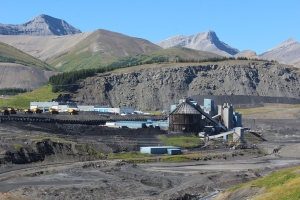Clean Energy Canada | Canada can still be a natural resource powerhouse in a net-zero economy
June 8, 2023

Canada’s wealth, our economic identity, and our financial booms (and busts) have long been tied to the value of natural resources within our borders. We have benefited immeasurably from the natural wealth of these lands: our vast forests, deep lakes, and of course the reservoirs of oil and gas buried beneath our feet.
As we find ourselves rapidly entering the clean energy transition, and as the superpower economies of the United States and the European Union pivot hard toward a net-zero 2050, an opportunity to transition our own natural resource sectors has emerged.
Climate action is increasingly being delivered through ambitious industrial policy, such as America’s Inflation Reduction Act, which is also focused on bringing supply chains back home, and strengthening trade ties with allies and like-minded nations.
Together, these trends present an opportunity to bring about an even more prosperous and sustainable economy for Canada, but it requires us to bet on ourselves. Canada has long been a significant exporter of natural resources, and the clean energy transition doesn’t change that.
Quebec, for example, has some of the highest-grade iron ore in the world, making it among the few options viable for the next generation of steel production (using a process known as the direct reduction of iron). Demand for high-quality iron ore is subsequently expected to grow significantly.
Saskatchewan, meanwhile, has long been a major global supplier of potash, a critical fertilizer for agriculture, but with Russia’s invasion of Ukraine cutting off supply from the world’s second largest source, Canada’s exports more than doubled between 2021 and 2022.
These are great examples of growing export opportunities, but perhaps more important is what Canada can achieve by harnessing our natural resources to drive value-added growth and economic development at home. In other words, combining our natural resource wealth with smart industrial policy.
Hydrogen is a great example. Canada has the resources to grow green hydrogen production capacity with access to abundant freshwater and an electricity grid that’s already 84 per cent non-emitting. But we don’t have to wait for a global market to develop for the resource, as we can use it to grow our export market for low-carbon and next-zero products that rely on hydrogen.
Hydrogen is one of the key ingredients in net-zero steel production. It will also be critical in the production of clean ammonia-based fertilizers, methanol, and a host of industrial chemicals with growing low-carbon export markets.
Similarly, Canada has many of the key critical minerals needed for electric vehicle (EV) batteries, including lithium and nickel. Not only is demand for these minerals exploding, we can also use them here in Canada as we develop an entire homegrown supply chain for EV batteries, capturing the jobs, intellectual property, and prosperity that goes with it.
But to unlock this potential, governments need to think strategically about how to best leverage our natural resources. Clean Energy Canada has made this case when it comes to batteries, and we have called for net-zero industrial roadmaps for all key heavy industries that use natural resources.
Canada also can’t rest on its laurels when it comes to clean electricity, which underpins our ability to extract and use these resources cleanly. Our lands and shorelines can provide almost limitless clean energy, but only if we ambitiously build out clean generation and transmission. This is why the federal government’s forthcoming Clean Electricity Regulation (that would see Canada’s power grid achieve net-zero emissions by 2035) is so important. Not only does it stake out our ambition and drive a clear market signal for the energy we need, but it is critical in ensuring we remain competitive with our allies and trading partners, who are similarly prioritizing net-zero electricity grids. Without it, we risk seeing our grid get dirtier as we try to meet demand—and with it, lose our competitive edge.
Natural resources have a bright future in Canada. We can build new trade ties and help our friends and allies fill key gaps in their supply chains. But more than that, our natural resources can be a part of our own story in the new economy, one where we capture all the wealth and opportunity they offer, forming a bedrock for jobs, communities, and prosperity for the decades to come.
This post was co-authored by Rachel Doran and originally appeared on The Hill Times.